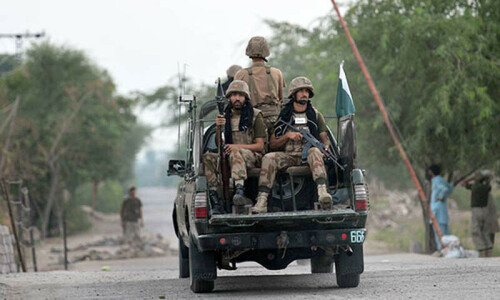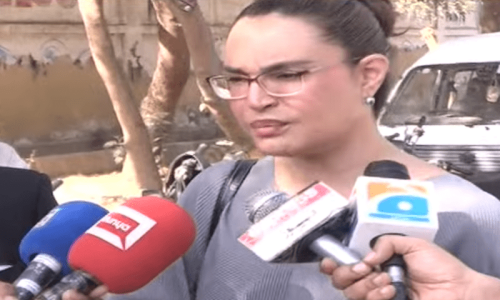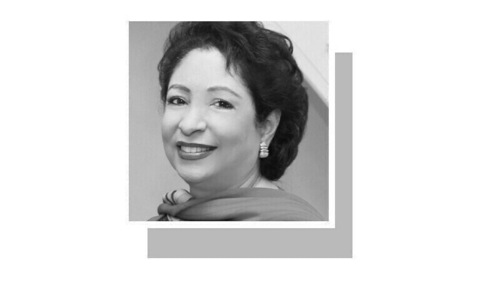Tear the sky open
Come stand before me
So your indigo pen can scrawl
Pallid yellow lines
On my forehead
Leafy glint of a peacock feather
Hue of a tiger’s rushed quickness
Gold, soot dark or flame bright
Your pitiless freezing gusts lacerate my heart
Colours’ swathe
Like pellucid wind against a jungle’s obduracy
And as blackened flesh, I
White figured in a spreading wilderness leached of pigment
Rubbed out by ice or darkness
Morph again and again into dream so I may fly —
Slivered light, stone shard
Cleve in me, shimmer into me
Come and break me apart
My terrifying terrorised God.
A nazm by Shamsur Rehman Faruqi, written in the 1980s. A nazm housed in literary modernism. My translation was composed in the 2000s, more than 20 years later. As I grapple with the Urdu I struggle to hold tight to the terse grace of the language, the pace of the verse’s formal skin, the visceral exquisiteness of the images, the yearning, the brutality — in other words all the ehsaas, the rang and rasa carried by the Urdu — while shunting aside compulsions to dry, bare-boned literalness.
At the same time I want to fold into my translation a sense of what this poem brings to an understanding of literary modernism in Urdu. That is, I want my translation to carry the lineage and comportment of my arguments about what belongs to modernism, to show how this poem lies fully in those genres of lyric composition, in those modes of literary inquiry that belong to the silsilah of modernism.
The poem is a lyrical tour de force in Urdu, and one that seems to compel its voice, its sonorous alliterations, to fly towards translation, vigorous enough to come alive again in English, potent enough to live synchronously inside and outside Urdu. Faruqi Sahib has suggested that his poetry is poised between languages, always almost in translation; the title of this nazm may provoke us to imagine it as one whose languages refuse the repose of one place.
‘Tang tanhaa’ii main baat-cheet’: a title which provokes the kind of slow parsing that anyone familiar with long lineages of lyric should take for granted, and a title which also lends itself to philosophical speculations on the nature and place of poetry composed for a certain sort of time and place. Tang: the opening word pulls the string between baat cheet or conversation and tanhaa’ii or solitude taut, elongates them away from each other, even as it binds them so tightly together they cannot fly apart. Tang tanhaa’ii main baat-cheet: the repeated rhythm of t, t across the phrase, torsioned through a nasal ng, separated by two long aas strikes and tugs and insinuates a tighter meaning-making regime.
Tang invokes the verb karnaa, which often makes its presence felt in everyday gufta-guu. Tang karnaa is to trouble something or someone, to produce difficulty, to pester, to bother — a child says to its mother, she is bothering me, tang kar rahii hai. It’s as though conversation and solitude are sibling thorns in each other’s sides, pressing up against one another, pinching and poking and prodding each other.
Between the isolated self and an other. A lover’s dirge: from Sanskrit to Farsi to Braj and Awadhi, Gujarati, Deccani, Bengali, Tamil. Baat-cheet, such a simple doubling, an everyday word for the back and forth of speaking, voices rising and falling, exchanging commonplaces of little import. Against it is poised an image of a lonely, longing lover. In the many registries of versification from South Asia, the trope of lovers who await conversations is a familiar one — just one small exchange with a beloved, a sharp retort for a rival, sharing secrets with the sakhi, raazdaan or friend, fighting off the pious asides of a naseh. A lover-poet’s tones can be ironically arrogant, as with some of Ghalib’s verses, or can evince the grieving isolation of a lover holding out for someone to come, calling them, demanding that they show up, imprisoned by love’s aloneness, held tight by a desire to be spoken to and to be heard. Solitariness and speaking counter-posed: a soul’s lament. Tang tanhaa’ii main baat-cheet: the title has no tense; it leaves open the question of time. Is the conversation in a now, does it comprise a hope held out for the future, a wish that must never see its shape, or has it passed into the lambent recesses of memory?
And herein lie a few of modernism’s lyrical charges. Poets composing in the intonations of modernism are often seen as nurturing in their poetics landscapes that only a solitary soul can inhabit. This soul’s lyric confined to its own small, tight (tang) circle of its own fancies and hunger. They are frequently accused of comporting themselves through an almost private language whose speaking possibilities are curtailed to the now, bound to their own present as the small hiatus in time in which poesy lives.
Leaving the question of time open in his title, Faruqi leads us to imagine other avenues which he goes on to traverse over the course of the nazm. Conversation, as an always held out possibility, can reach beyond a soul caught in its own misery, or ardor, and give it the gift of reaching its hand out towards a future. The undertow of conversation is an enticement to the past phrases that lie supine within a misra and that tug away at others long gone by. It can fill up each word incandescent with resonances that hark back through remembering. It can track sideways into multiple lineages to brush a palette so thickly painted over that conversations must be a verse’s only possibility, so that it may flower into meaning. Conversations, such as these, coming from modernism’s oeuvre, are conducted almost always in a state and a place of tang tanhaa’ii, of difficult loneliness, or else a poem will not do the work of new ways of feeling and composing (tajribah). The irony of unique modulations of composition is that their unfamiliarities are haunted by the prospect that no one will comprehend what the poem intends, no one will listen, the poem’s tanhaa’ii will be its death. Holding its demise at bay lies only in the enabling theatre of a back and forth across time and histories of lyrical practice.
Images peculiar to a particular poet’s syntax, yet in necessary collusion with so many poets who have passed before, these protocols of modernism follow the features of Sabk-i-Hindi suggested by Faruqi in his work on it. Sabk-i-Hindi then can be seen as a school of poetics that could perhaps be understood as the progenitor of the silsilah of modernism, jadiidiyaat from another time. Both offer regularised plays with translation gleaned from the arsenals of Farsii, Sanskrit, Braj. Translation then, as reading over and over through other languages, as technae for culling meaning, becomes modernism’s mandate, its raison d’etre. The poet Miraji, an early practitioner in a long line of modernist poets, says of tarjumah that it is a transaction which transmutes life into art. Without translation there would be no art, and what Faruqi shows us in his poem is that without translation reading would come to a halt.
In this, Faruqi follows Miraji’s call for modernism as a practice of composition in which translation cultivates the past and the future into a possible poetics, a possible lyricism, and possibilities for seeing lyrical phrasing anew. To compose is to flower into reading. To read without settling one’s body into a single path is to translate in the very strongest sense where the reader refuses to come to rest merely in one home. Modernism’s lyric calls for a skin porous to images that would batter flesh otherwise, images that would lose their way into nonsense if they were not muscled anew into the flesh and blood of the reader. In a line from this nazm that invokes a metaphor for this sort of habit of reading: a reader is a shaffaf havaa flowing into a ghaneraa jangal (pellucid wind against obdurate jungle). If the poem, as jangal, is to stand as something that holds its own as lyric, its lines and scenes must always elude complete explication. So that the job of reading modernist poetry, a style of modernist reading initiated by Miraji and carried on into what this particular nazm compels, is akin to the job of reading any strong poem well. Readings touch, live and reside in the image-metaphors of a lyric, let them keep their shape, stance and elusiveness, rather than break them down into easily digestible, miscible, small bites of explanation. Poems that can hold their own are invested with the quality of mub-ham (occult, unknown, concealed, uncertain, ambiguous), so that readings always leave an immiscible residue behind. Faruqi’s nazm, built up from the tougher intransigent base of metaphors rather than similes that are sometimes easier to unravel, calls for exactly this kind of reading practice. One in which a good enough reading must care for the poem tenderly, grow it into necessary impenetrability rather than chop it down, or destroy its density.
An iconography of words in this title that is impossible, then, to settle into one translated phrase. Centripetal and centrifugal force spin the title outwards from itself, drag it back tightly. Each word, each sound, each line, each stanza in the lyrical paths this poem takes from this point onwards can fly out to gather into its fold circuits of meaning, and curve tightly back in again. In the following sections of this brief series of reflections on Faruqi’s masterful nazm, I will make my way through merely a few chosen paths the poem lays down to explore its nuances and offer yet other suggestions thrown up by it on the craft, analytics and poetics of modernist lyrical practice.
“Aasmaan cheer ke aa, saamne aa.” Tear the sky open / And come stand before me. ‘Tang tanhaa’ii men baat cheet’ opens with the verb cheernaa, a violent tearing in the fabric of the sky. As a poem it rends a sky — “aasmaan” provokes a vastness, perhaps the divine, perhaps an infinity, perhaps a blank emptiness — to write its landscape palette. Someone is called out, ordered to come and stand, “mere saamne” before me, the poet, the scribe, the lover, the speaker. The one who is commanded to arrive is never entirely ghosted into solidity; that one is asked by a waiting interlocutor to come and write on the speaker’s forehead. Infinity devolves into closeness, vulnerable forehead receptive to what is to be scrawled across it. The word for forehead, peshaanii, also recalls fate, destiny, what will come to pass. This presence of another is never housed in a name, never sediments into a direct pronoun. They leave their traces behind in the spoor of their effects and their journey through the poem commences through a rip that they ostensibly make.
So your indigo pen can scrawl / Pallid yellow lines. “Niilaa qalam — zard lakiiren,” blue black pen, yellow, pale, pallid lines. A doubling of semantic associations lie in these phrases. Niilaa, from Sanskrit, Braj, Dakkani, is the colour of Krishna, the colour of the night sky, the colour of indigo (that one sees in Niil Darpan, the political play performed by Indian People’s Theatre Association in Bengal in the 1940s), and here it is married to qalam, Arabic reed pared down to pen, or perhaps brush.
An ordinary word like niilaa, qalam comes to hand easily every day, but its allegiances strain slightly against the putatively Indic niil. Zard and lakiir: Farsi and sadaa Hindustani — yellow, pale, contemptible, a shade that reflects light, yellow livered, colour which stains the dawn line, the streak, the stripe. Dark blue lit up with the gold streaks of the early sun. Combined, the two summon the colour contrast between Krishna, the dark blue, reed-flute playing lover and his beloved, a pale yellow Radha.
The one I have commanded comes, ripping the sky open, turns me into the horizon daybreak, stains my forehead with the tones of love lyric, scrawls my fate on my forehead (kissing it with a gentle touch or a sharp scratch, leaving behind the mark of Cain, but also perhaps opening my third eye, so that I can see anew). And the kaleidoscope fills up rich and deep with semantic allusions that overlay palimpsestically, jostle and tug at one another, demand to be read.
These are the protocols of some of modernism’s proper calls in a South Asian milieu, or maahaul, translation into new worlds, writing that demands a violent wrenching, adventurous desecration. Tones orchestrated from multiple forbearers that strain against what have come to be accepted etiquette, mazmuun and ma’ani that feel almost right, but yet escape munaasibat. A paint box of metaphor, “pardah rang,” a colour swath, colours that curtain, where the metaphors are the quotidian material from which poets sketch shades and inflections, hues and rang, but also animate their verse through ras, ehsaas or feeling. Modernism encompasses something that Faruqi also speaks of as the covenants of Sabk-i-Hindi, which make words and phrasing so hard to fathom easily: metaphor turns true, not to itself in some simple way, but to the landscapes that take it as the starting point, so that poetry can build and break and shift and stall. What was once figural has alchemised into vividly plain primary colours — gold, black, flame bright — while still clinging to the elusiveness of metaphoric intent.
South Asian scenes show up in the next lines from the jungle. Faruqi’s mise en scene is not set in the baghichaa or baagh, the Persian garden, densely scented with rose petals falling out of bloom, lined with cypress trees elongating skywards, but in the thickly forested obdurate jungle, tracked in the iridescent green, sabz camak of a feather a peacock shed, “sher kii raftaar kaa rang,” spume of fading memory left in the wake of a tiger’s yellow, burnished bright. A bower where the feather that Krishna wears might have fallen as he made love, the vaahanaa of Durga might have stalked.
The entire lyrical panorama of this nazm unsettles its moorings between come and come, injunctions to someone. The first call to come is doubled, “aasmaan cheer ke aa, saamne aa,” a series of long aas syncopating the meter of the opening two lines, softening the impact of cheer, of the tearing. The final aa that closes the nazm, “aajaa, mere tukde kar,” asks for the one who arrives to break the one calling into pieces. Between the opening and the closing come, what is it that happens? What moves the poem along?
The poem’s entire center is dystopian. From chubhan, the jabs to and tearing of a jigar, where the heart’s and life’s desire resides, through the melodious blackening, the soft hiss of siiyah faam, the bleeding out of colour into white, to being rubbed out by freezing cold or effacing dark: the subject loses all its rang and the metaphors that stitch subjectivity fluctuate between the stark contrast of black and white. One suggests burning out, light seeping away, so that hues and tones can’t be seen, the other a brightness that is so vivid that colours blot out. The metaphors destroy the subject in a visceral physical way. An expunging that resonates with, as Faruqi himself has suggested, political as well as metaphysical overtones.
The hard corporeality of the images continues into the closing stanza. Light slivers and stone shatters, the subject asks for them to shard apart in them. But before the break proffered by these final lines the subject wants to fly. To do so, either they have to turn into dream or the person or entity that is called to come must morph again and again, over and over into something that is insubstantial. Something that is filled with terror or something that has the capacity to engender terror in someone else. Stone and light, oppositions that pull apart, sunder, uncouple. One shows, the other makes, one floats upward, the other sinks deep. One is the sky, the other the foundation. Out of these constitutive contradictions a subject can fly, only in its palpable rupture, where nothing coheres can something come to be. And here, in this place, god, the beloved and the reader reside.
So what does this nazm in the final analysis tell us? The only place we encounter a subject as “main” in the form of the direct pronoun is with siiyah faam, darkened death. In the rest of the poem readers meet the subject indirectly in the pronomial oblique. Between blackening out and standing askew resides the difficult poem crafted from languages that push and poke at readerly desires for seamless clarity. That askance, elliptical stance is one which allows a hiatus where insinuations of reading, the persuasions of translation might espy themselves: a modernist comportment. And here, in this impossible place, god, beloved, the poet and her reader may perhaps find themselves without a home.















































